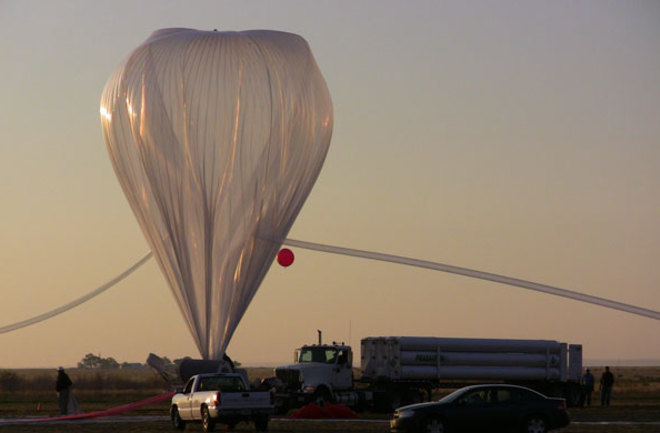The plane pitches violently as it plows through the milky innards of a cloud bank. A commercial pilot would fly high above these clouds over California’s Sierra Nevada Range, but this 63-foot Gulfstream-1 seems to invite the turbulence. Updrafts grab hold of the aircraft and shove it up even as the pilot noses it down. In the back of the plane, atmospheric chemist Kimberly Prather wears headphones to muffle the roar of the propellers. She steadies herself with a hand on an instrument rack and focuses on the bobbing screen of her laptop. Readings from the clouds spool across it.
Those numbers tell Prather that these winter clouds are cold and heavy, –30 degrees Fahrenheit and just over 100 percent relative humidity. Yet despite being 62 degrees below the freezing point of water, the cloud droplets remain stubbornly liquid. As long as they don’t form ice crystals, these clouds won’t shed more than a few flakes of snow over the Sierras’ 13,000-foot peaks. They are typical clouds, teasers that won’t drop much of anything.
After two hours of flying, though, something changes. The voice of another researcher crackles over Prather’s headset: “Ice!” The plane has entered a cloud layer where suddenly every droplet is frozen. Prather’s instrument—a tangle of metal tubes, wires, and airtight chambers nicknamed Shirley—tick-tick-ticks as its laser blasts apart hundreds of microscopic cloud particles, one by one, that are drawn in from the air outside. The size and composition of each particle flash across Prather’s monitor. The specks at the heart of those ice crystals are high in aluminum, iron, silicon, and titanium, the chemical signatures of dust not from California but from faraway deserts in Asia or even Africa. There’s something else in the crystals too: carbon, nitrogen, and phosphorus, telltale signs of biological cells.
The skies are full of invisible life. Bacteria, algae, and fungi are swept up by winds and lifted to the altitude of a Boeing 747—or catapulted 20 miles into the stratosphere by electric fields during thunderstorms. Prather, a 49-year-old professor at the University of California, San Diego, is one of a growing number of scientists who suspect this largely unexplored microbial ecosystem might hold the answer to one of the great mysteries of the weather: Why do clouds produce precipitation when they do?
It seems like such a basic question, but “we really don’t understand why some clouds drop rain and others don’t,” Prather says. At the heart of this mystery is the physics of ice formation. A pure cloud droplet can cool to –40ºF before it freezes, and many clouds on Earth never get anywhere near this cold. Rain and snow often require tiny particles floating in the cloud to trigger ice to form, and not just any particle will do. A cubic yard of air contains hundreds of thousands of microscopic specks, but only about one in a million possesses the exact molecular geometry that will organize water molecules on its surface to spawn an ice crystal. Without those rare ice-forming triggers, much of the planet would see less precipitation than it does today.

